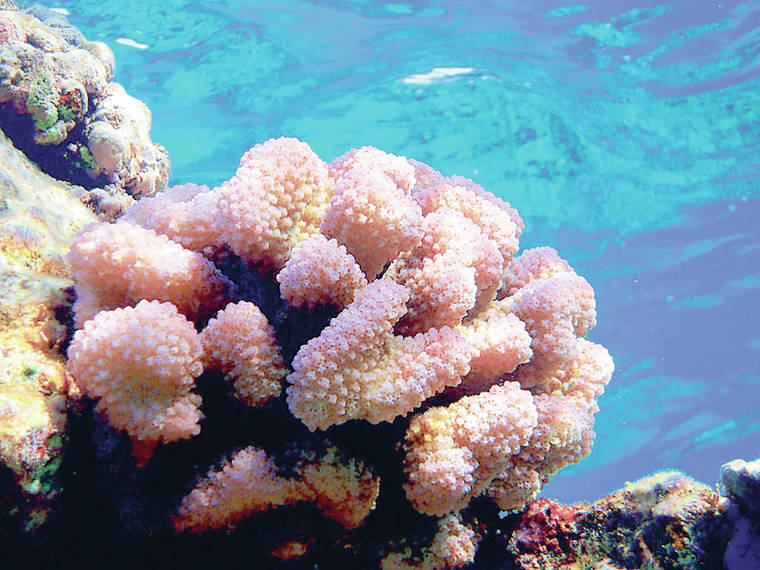LIHU‘E — While the Trump Administration is eyeing new protections for Hawai‘i’s cauliflower coral, researchers with the University of Hawai‘i have uncovered clues as to how land use affects the sea creatures.
Wednesday, the National Marine Fisheries Service announced it would determine whether the coral warrants protection under the Endangered Species Act by June 30 — the result of a federal lawsuit filed by the Center for Biological Diversity.
As a foundation of the article, the Center for Biological Diversity cited a 36% decline in cauliflower coral coverage around Hawai‘i from 1999 to 2012 and the severe bleaching the corals endured in 2019 and in 2015.
The center filed suit in October 2019 after NWS said it would consider listing the corals under the ESA.
“Time is running out to save our coral reefs and the rich marine biodiversity they support,” said the center’s Hawai‘i director Maxx Phillips. “Cauliflower coral, which is called “ko‘a” in Hawaiian, will only be here for future generations if we take care of it now.”
Many factors affect coral growth and reef health, including runoff from land-based pollution, which was a focus in the recent UH study, led by researchers with the School of Ocean and Earth Science and Technology.
The study found the survival of coral larvae, which make up the reefs, is dependent upon ocean conditions. In the announcement about the study, researchers said “larvae in their first few days of life were negatively affected by elevated nutrients and a modest increase in water temperature.”
The research team used larvae from three common Hawaiian coral species that were all less than one day old. Researchers exposed them to different combinations of low or high nutrients and water temperatures.
Five days later, the team analyzed how the stressors impacted the larval growth.
When nitrogen was high, coral larvae showed the lowest survivorship, researchers said.
Warming didn’t reduce survival, but the interaction of high temperatures and high nutrients did impact larval growth, generally producing smaller larvae.
“The study also revealed that the new way corals reproduce and other biological differences among larvae influence how they respond to environmental change,” said Chris Wall, study co-author and postdoctoral researcher at SOEST’s Pacific Biosciences Research Center.
In adult corals, nutrient pollution can magnify the effects of ocean warming.
“Understanding the impacts of stressors on adult corals has been a primary focus of coral research, but this is just one piece of the puzzle,” said study co-author Madeline Piscetta. “In order to gain a comprehensive understanding of how temperature and nutrients will shape coral reefs, we need to examine these interactions across all life history stages.”
•••
Jessica Else, editor-in-chief, can be reached at 245-0457 or jelse@thegardenisland.com.




